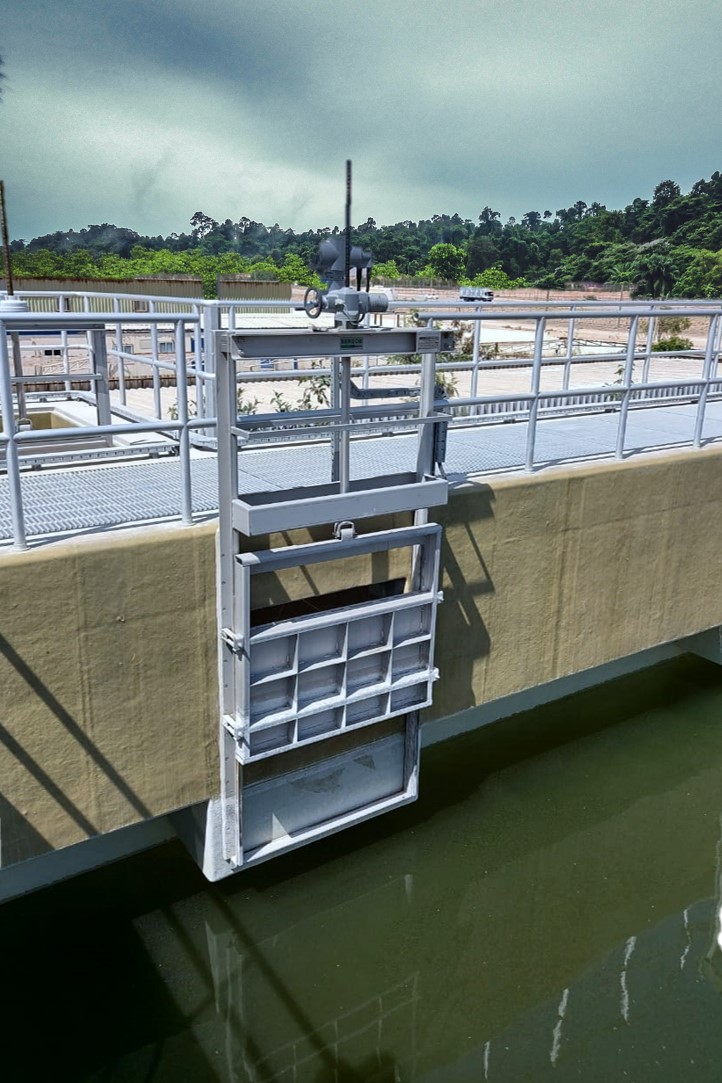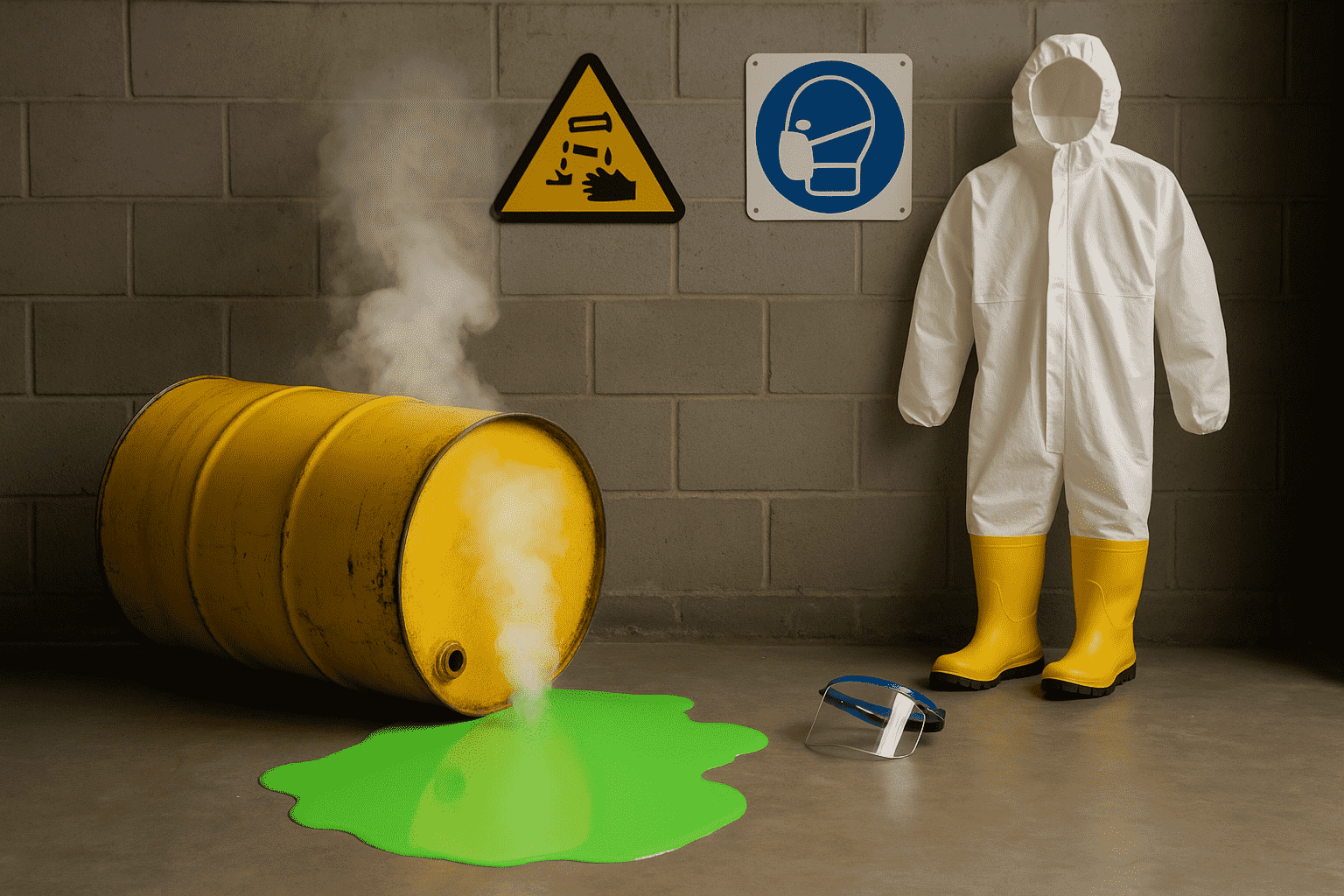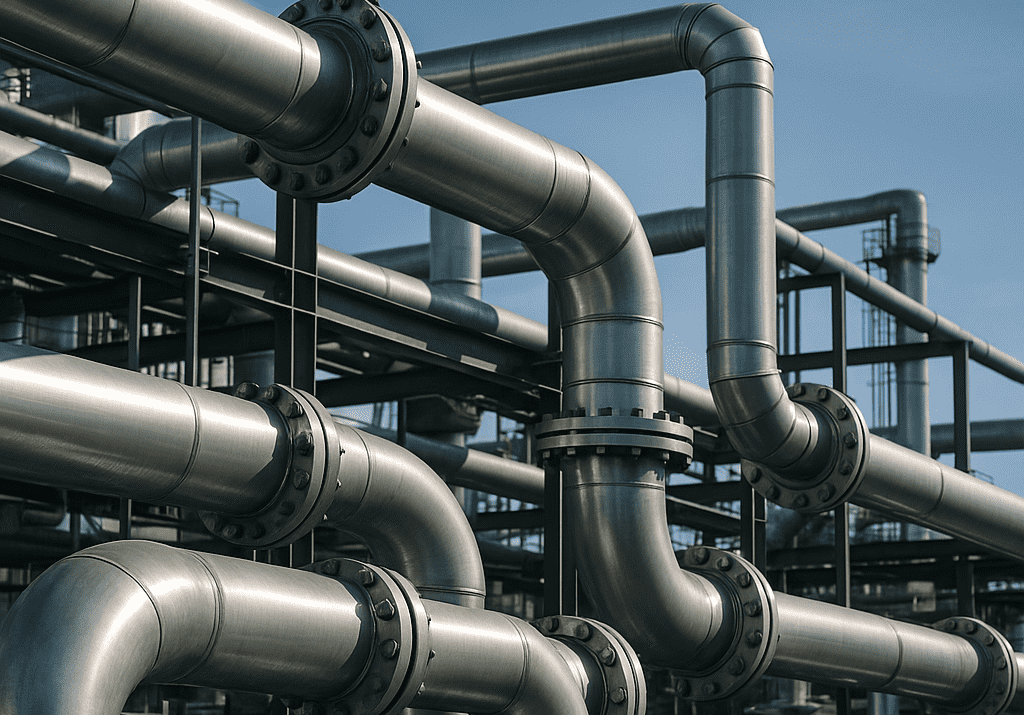Sluice Gate A Portal To Control Water Flow

Sluice Gate is integral to the control of water flow. Sluice gate finds applications in diversion canals, irrigation canals, water treatment plants, wastewater treatment plants, sewage treatment plants, reservoirs, and in various industrial applications.
Primarily Sluice gate is used to cut off or restrain the flow of a liquid. It regulates the movement of water, especially for controlling flooding, maintaining water levels, and in various industries to optimize process efficiency by controlling the flow and level of liquid.
Sluice gate allows water/liquid to flow under it. It has three main parts viz, moveable sluice gate, a guide-frame which is fixed in concrete to support the gate, and lastly the drive mechanism. In some cases, sluice gate acts as a weir when it is lowered to let water spill over the top.
Sluice gates are available in various types, the widely used types of gates are:
1. Flap Sluice Gate: A differential pressure on the back of the gate causes it to open automatically to allow discharge through levees, sewer lines, or drainage conduits. When water on the face side of the gate rises above the water on the back side, the gate closes automatically to prevent backflow.
2. Vertical Rising Sluice Gate: The gate slides up and down in a vertical direction to control the flow.
3. Radial Sluice Gate: The gate is cylindrical wherein a small part of its surface serves as the gate in a radial construction, provided with a counterweight for operation.
4. Rising Sluice Gate: The gate rests at the bottom of the channel of a cylindrical surface and rises by rotating around its center.
Further, based on the purpose, Sluice gate can be classified into:
1. Intake Sluice Gate: Built on the banks of rivers, reservoirs, or lakes, and at the head of irrigation diversion channels, to control the flow into the canal.
2. Divide Sluice Gate: The sluice gate is used to introduce the flow of the upper-level channel into the next-level channel as needed. It acts as the inlet gate of the next-level channel.
3. Control Sluice Gate: Control gates are generally built across the trunk and branch canals and are located downstream of the branch and bucket canals to control the water level in front of the sluice and meet the water level requirements of the branch and bucket channels.
4. Drain Sluice Gate: Drain sluice gate holds water in both directions and also allows water to flow in both directions. This characteristic help in drawing the river water during high tide to meet the water demand of the control area for irrigation. At the same time, it blocks the tides and drains waterlogging.
5. Rinse Sand Sluice Gate: Sand flushing sluices are mostly built at the end of sedimentation basins in diversion hubs or canal systems on sediment-laden rivers they are also known as sand sluices.
The design and type of the Sluice gate are based on parameters such as:
1. Size of the gate
2. Direction of the flow of fluid to be controlled. Whether the force of liquid will be on or off its sealing face
3. Differential head in meters across the gate in both directions under:
4. Static condition
5. Open and close condition
6. Wall, channel, pipe, or thimble mounting
7. Method of operation
Along with the design and type of Sluice gate, the selection of the Sluice gate site is important and should be based on the application requirements, while considering topography, geology, water flow, sediment content, and, construction & management that best suits the entire scheme.
The selection of the right type and number of gates along with the right gate location will ensure optimum flow control, minimum leaks, ease of operation and maintenance, and contribute to cost reduction of the overall scheme.
Sluice gate also known as watergate/Penstock Gate/stoplog has been in use for centuries. There have been many instances of accidents post-installation of sluice gates due to varied reasons hence, precise working on identifying the right scheme, right location, a suitable type of gate, and calculating the force of water plays a crucial role. Though the working principle of the gate is simple, it is capable of creating a large impact on the receiving channels thereby affecting subsequent processes or livelihoods depending on the water body.
Frequently Asked Questions(FAQs)
Q.1 How does an oil water separator work?
A. Oil Water Separators are a common solution for removing oil and other pollutants from wastewater. They use a combination of gravity, coalescence, and chemical filtration to separate oil from water. This process is highly effective in removing oil and other contaminants from wastewater, allowing the clean water to be reused or discharged safely into the environment.
Q.2 What safety measures should be taken when using oil spill response equipment?
A. Oil spills can have a devastating impact on the environment, so it is important to take safety precautions when using Oil Spill Response Equipment. In order to ensure the safety of personnel and the environment, there are certain measures that should be taken when handling oil spill response equipment. This includes proper training for personnel, proper maintenance of equipment, and following all safety regulations.
Q.3 What are the benefits of using a mechanical bar screen?
A. A Mechanical Bar Screen is a great tool for maintaining clean water. It can help to prevent debris from entering the water system, as well as reduce the amount of sediment that accumulates in the pipes. This type of screening device can also protect fish and other aquatic life from being harmed by pollutants or other debris. Additionally, mechanical bar screens are cost-effective and easy to install and maintain.





